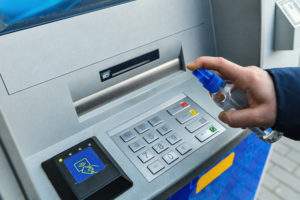
Early this year, an insurance change left me looking for a new Primary Care Physician. As if starting over with a new doctor isn’t bad enough, there is the dreaded new patient information packet. After filling out endless forms, the receptionist took a copy of my drivers license and insurance card and then directed me to enroll to use their biometric hand scanning device.
This week, I had to make a trip back to the doctor. Of course, the fancy hand scanning device is the last thing anyone wants to touch — especially in a medical facility. To my relief, they weren’t using it — for the protection of the patients. Ironic, right?
The case for contactless biometric authentication
As the coronavirus continues to spread, we’ve all become hyperaware of virus containment… and cautious.
All day long we come into contact with surfaces that contain germs –and a lot of them. For example, researchers found that the average keyboard contains more than 7,000 microorganisms.
If you think that’s gross, what about objects that are touched by a lot of people? We may be vigilant about cleaning the handle of our grocery cart with an anti-bacterial wipe or using some hand gel after holding onto a subway pole, but we engage in other interactions without much thought. This is often the case with security devices and payment systems such as:
-
Keypads and touchscreens for physical access – users enter a code to gain access to a building or protected area. It’s enough to spread germs in an office environment with a few sick workers who don’t stay at home.
-
Credit and debit cards – A 2019 study by LendEDU.com found that credit cards are among the dirtiest common items — even more so than cash. These cards change hands, get swiped and are placed on restaurant tables.
-
Payment systems – in many cases users still need to enter their PINs on a keypad when paying at a store and, like many other devices on the list, they are rarely if ever cleaned.
-
ATMs – Users interact with a touchpad and/or screen to enter their PIN and make banking selections.
-
Airport security – Today, we show our passport or driver’s license at an airport security checkpoint. The agent is wearing gloves which protects them but what about the 100s of other documents they’ve touched?
-
Fingerprint readers and palm scanners – Access to buildings and controlled areas within places including hospitals are increasingly protected by fingerprint readers. They are also used with employee attendance systems.
When it comes to COVID-19, a study in the New England Journal of Medicine found that the virus can live two to three days on plastic and stainless steel.
Contactless biometric authentication approaches include voice biometrics and/or face recognition to verify a user – impacting virus containment by reducing the number of things people need to touch when physically accessing secured locations and conducting transactions on public devices like ATMs, kiosks and payment systems.
The fact is that germs lurk everywhere, and the very best approach for virus containment is practicing good hygiene — and in our current situation, avoiding contact. Fortunately, people are heeding the warnings and orders by doing as much as they can from home — from working, shopping and banking to virtual doctor visits. This transition is shedding a light on the need for contactless biometrics for strong identity verification and authentication practices that are both simple and less prone to fraudulent activity. Virus containment is another area where contactless biometric technology shines.
